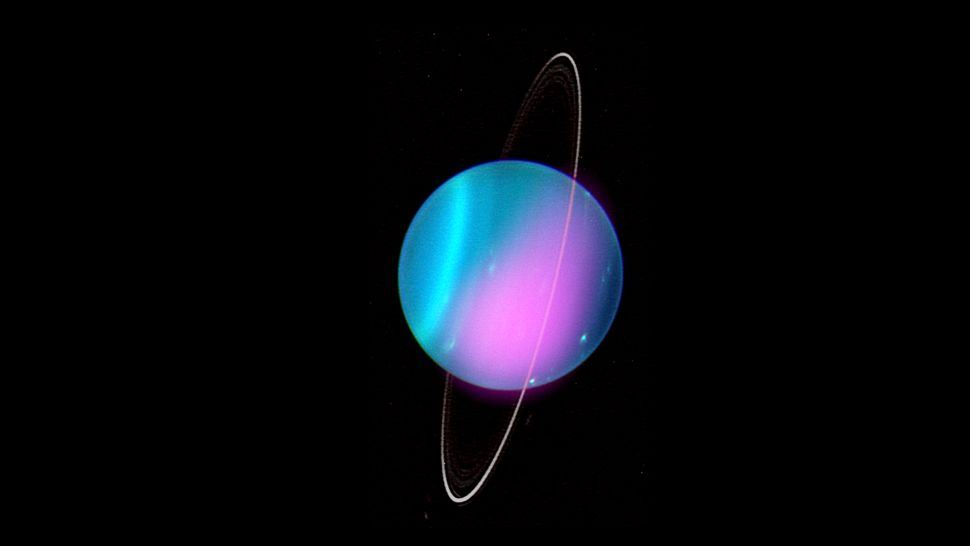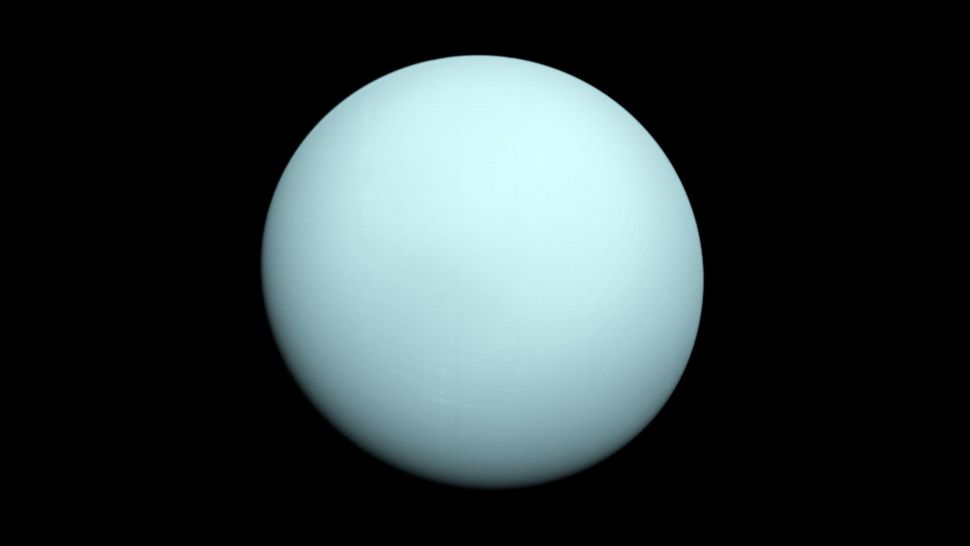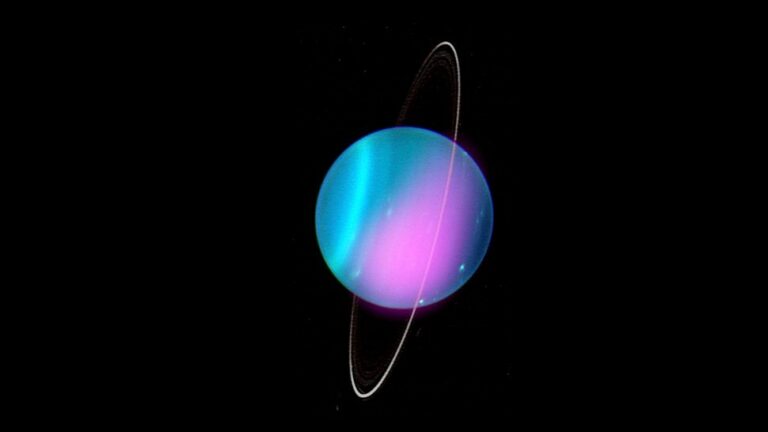Uranus’ weird tilt may be the work of a long-lost moon
The tilt of Uranus is one of the planet’s most peculiar characteristics.
With a tilt of 98 degrees, Uranus has the highest inclination in the solar system and spins almost exactly perpendicular to its orbit. Uranus was thought to have been turned on its side by a series of massive collisions during the planet’s early development, but recent evidence points to a much less violent cause: a wandering satellite.

Except for Uranus, all of the planets in the solar system have orbital tilts that are less than 30 degrees. The whole Uranus system is turned on its side, which has an impact on the planet’s rotation as well as the orbits of its moons and rings, which travel in an arc perpendicular to the planet’s spin around the sun.
Since Neptune, a nearby ice giant, has a typical tilt despite the two presumably having comparable formation histories, which makes Uranus’ peculiar tilt all the more perplexing. How come Uranus has problems?
Long-standing theories among astronomers suggest that Uranus formed as a result of at least one massive impact. It’s simple to picture: Uranus, then still in its protoplanetary stage, would have been knocked over by the proper collision at the right time, and the planet would never have been able to right itself before developing its system of planets and moons.
And this conclusion is supported by certain scientific findings. There are many big rocks around to cause mayhem since the solar system was a really tumultuous place when it first formed. The fact that Neptune exhibits a few minor variations, such as a different temperature and a collection of moons with unique properties (such Neptune’s moon being significantly bigger), suggests that the two planets underwent different circumstances at some time during their development.
The unluckiest planet
The impact theory, however, also has flaws.
There were several big rocks circling the early solar system in search of an unfortunate target, not just one. All of the planets, particularly the outer ones, are believed to have experienced several impacts during creation. Even the inner planets weren’t spared; early on, the moon was formed when Earth was struck by a protoplanet the size of Mars.
So why didn’t the other planets be hit, if Uranus was struck so forcefully that it overturned? Over time, Jupiter and Saturn finally formed substantial gas clouds that would have helped them stand up again. However, despite their minor variations, Neptune and Uranus are very similar. They both have tangled magnetic fields, comparable atmospheres, diameters, masses, and spin rates, and shared a similar past with Earth.
We are now faced with a problem. Perhaps poor Uranus was simply really unfortunate, and simulations back up the notion that the planet was tilted by the right hit. However, the usual astronomer isn’t really satisfied by “pure chance”; we should explore all our other choices first.
Therefore, it’s possible that the solution has nothing to do with effects. According to a recent research that was accepted for publication in the journal Astronomy and Astrophysics and uploaded to the preprint site arXiv.org, it could have something to do with moons.

Lost children
The solar system of the early universe was very different from the solar system of today. Particularly the huge planets presumably developed substantially closer to the sun and much closer to one another. Over time, interactions between them and with roving planetesimals caused Uranus and Neptune to move outward the most. (In fact, some solar system models suggest that a fifth, large planet may have been expelled throughout all of this movement and may exist.)
Moons were there when the massive planets formed, but as the planets moved, the moons were rearranged. Some planets lost moons while others gained them as a result of the complex gravitational dynamics at play.
So Uranus might have been born with a large moon or quickly captured one. Additionally, if the moon had been large enough, it might have begun tampering with the planet’s spin.
Most likely, Uranus began with a tiny, haphazard tilt. That tilt will eventually precess, as scientists refer to it, causing the direction of the planet’s rotation to sway like a huge top. (Earth behaves similarly.) A moon often doesn’t give a damn about the tilt precession of its planet. However, it is feasible for a moon to become trapped into a resonance pattern in which the period required for precession coincides with a large number of lunar orbits.
The precession is strengthened by this resonance, which enables the moon’s gravitational pull to be felt softly on the planet. Over the span of millions of years, that tilt worsens, like there’s an invisible rope tied to the top of the world. The moon would gradually approach the planet as this continued.
The scientists discovered that if Uranus had formerly had a moon large enough, it would have been able to drag the planet’s tilt over 80 degrees within a few hundred million years. The satellite would subsequently complete the task by colliding with Uranus, which would fix the planet’s tilt at its current angle.
This explanation would explain why Uranus is so unusual: it just had a large enough moon that slid into resonance, which is common enough but not so often that we should anticipate it happening to Neptune. And from there, everything started to go wrong.
Do not forget to share your opinion with us to provide you with the best posts !





0 Comments